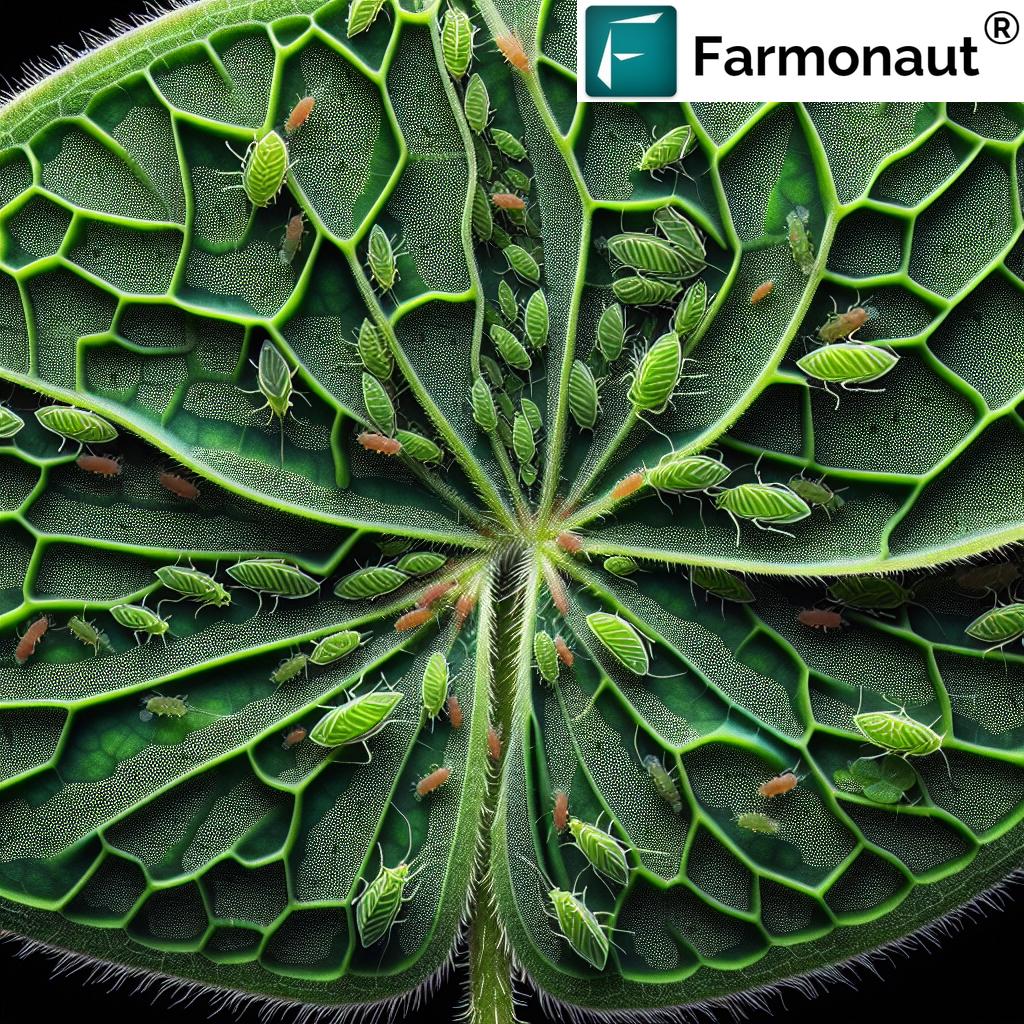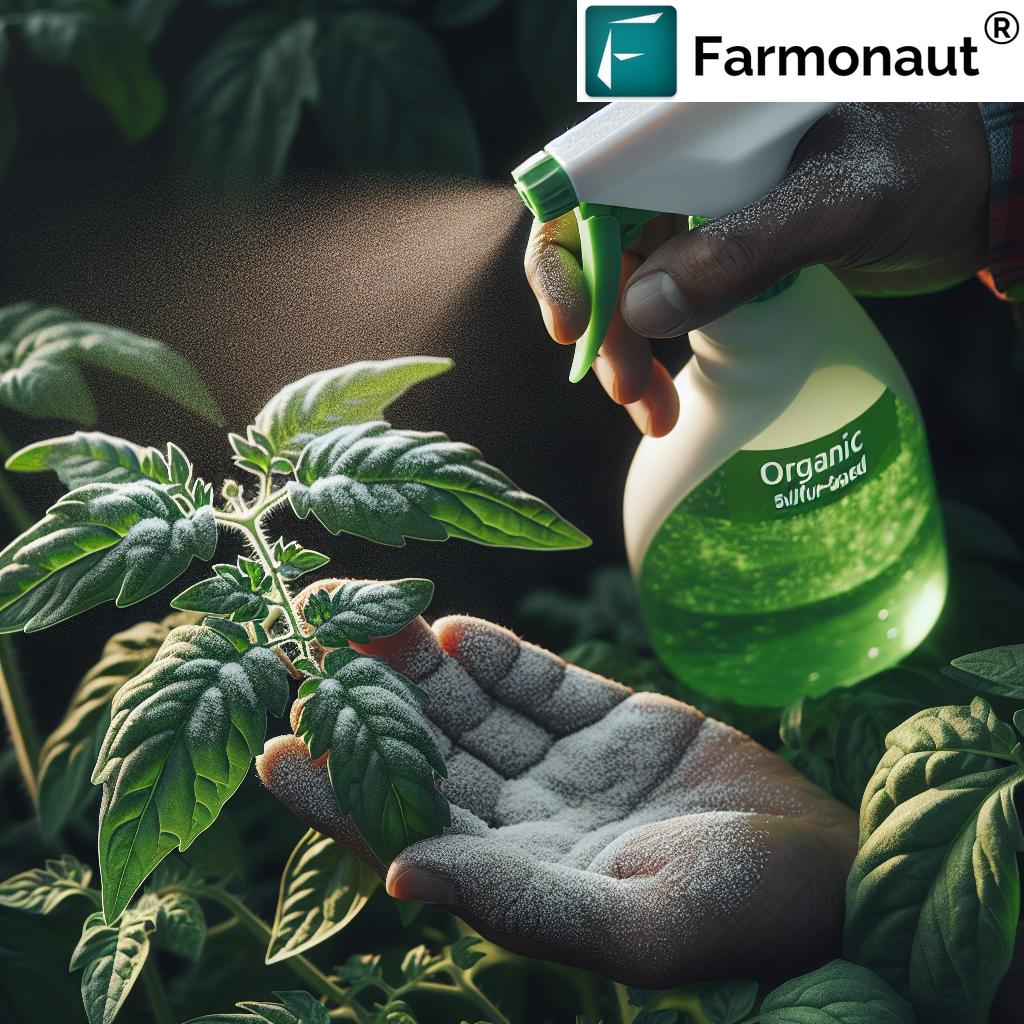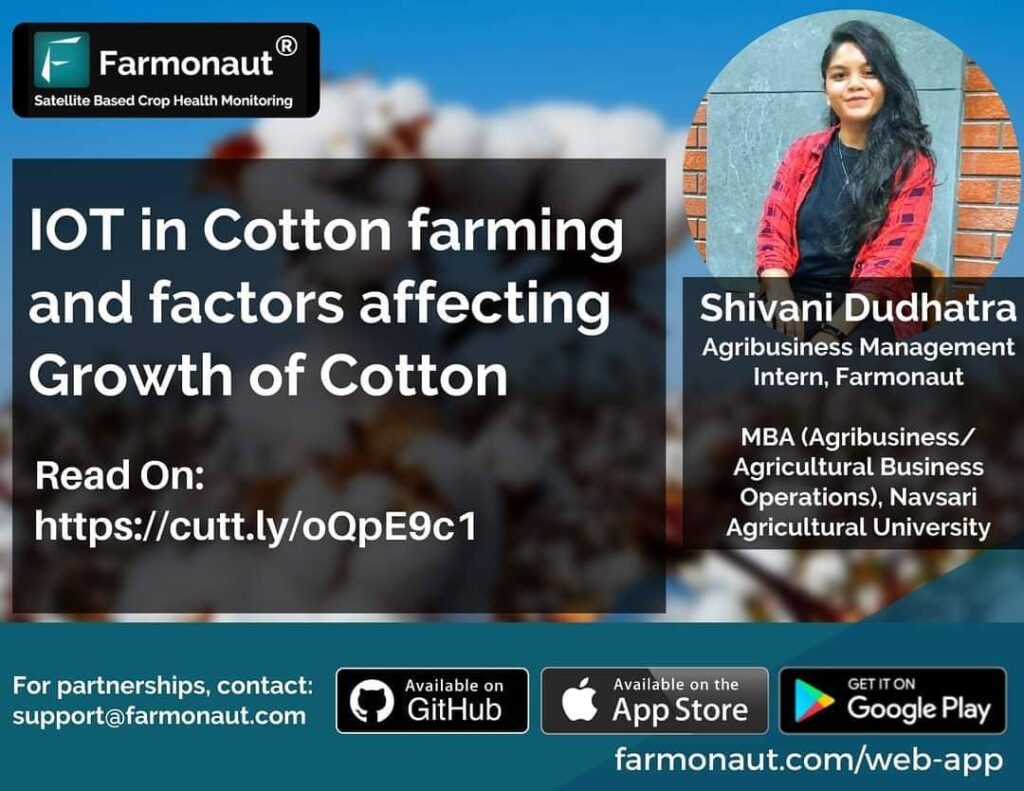
Organic Alfalfa Protection: Integrated Pest Management for Aphids and Mosaic Virus Control
As farmers and agricultural experts, we understand the importance of protecting our valuable alfalfa crops from devastating pests and diseases. In this comprehensive guide, we’ll explore the challenges posed by aphids and mosaic viruses in alfalfa cultivation, with a particular focus on organic and integrated pest management (IPM) strategies. We’ll delve into the world of sustainable farming practices, leveraging cutting-edge technology to enhance crop protection while minimizing environmental impact.
Understanding the Threat: Aphids and Alfalfa Mosaic Virus (AMV)
Alfalfa, a crucial forage crop, is susceptible to various pests and diseases. Two of the most significant threats are aphids and the alfalfa mosaic virus (AMV). Let’s examine these challenges in detail:
Aphids: Tiny Pests with Big Consequences
Aphids are small, soft-bodied insects that feed on plant sap. In alfalfa fields, they can quickly multiply, leading to severe infestations. These pests cause damage in several ways:
- Direct feeding damage to leaves and stems
- Secretion of honeydew, which promotes sooty mold growth
- Transmission of plant viruses, including AMV
The presence of aphids can result in stunted growth, reduced yield, and overall plant health decline. Early detection and control are crucial for preventing widespread damage.
Alfalfa Mosaic Virus (AMV): A Persistent Threat
AMV is a plant virus that can cause significant damage to alfalfa crops. It belongs to the group of mosaic viruses, named for the characteristic mosaic pattern they create on infected leaves. Key points about AMV include:
- Transmitted primarily by aphids
- Can also spread through infected seeds or mechanical means
- Causes mottling, yellowing, and stunting of alfalfa plants
- Reduces forage quality and yield
The combination of aphid infestations and AMV can be particularly devastating for alfalfa growers, necessitating a comprehensive approach to pest and disease management.
Symptoms and Identification
Recognizing the signs of aphid infestation and AMV infection is crucial for timely intervention. Let’s explore the symptoms of each:
Aphid Infestation Symptoms
- Clusters of small, pear-shaped insects on leaves and stems
- Curling or distortion of leaves
- Stunted plant growth
- Presence of sticky honeydew on leaves and stems
- Sooty mold growth on honeydew-covered surfaces
Alfalfa Mosaic Virus (AMV) Symptoms
- Mosaic pattern of light and dark green areas on leaves
- Yellowing or chlorosis of leaves
- Stunted growth and reduced plant vigor
- Malformed or distorted leaves
- Reduced flowering and seed production
It’s important to note that these symptoms can sometimes be confused with other plant stressors or nutrient deficiencies. Regular monitoring and professional diagnosis are essential for accurate identification.
The Importance of Integrated Pest Management (IPM)
At Farmonaut, we strongly advocate for the adoption of Integrated Pest Management (IPM) strategies in alfalfa cultivation. IPM is a holistic approach that combines various pest control methods to minimize economic, health, and environmental risks. Key principles of IPM include:
- Prevention
- Monitoring
- Identification
- Action thresholds
- Combination of control methods
- Evaluation and adjustment
By implementing IPM, farmers can effectively manage aphids and AMV while reducing reliance on chemical pesticides. This approach is particularly valuable for organic alfalfa growers who need to adhere to strict guidelines on pest control methods.
Organic Control Strategies for Aphids and AMV
For organic alfalfa producers, there are several effective strategies to manage aphids and prevent the spread of AMV without resorting to synthetic pesticides:
1. Cultural Controls
- Crop rotation to break pest cycles
- Planting resistant alfalfa varieties
- Adjusting planting dates to avoid peak aphid activity
- Maintaining proper plant spacing for good air circulation
- Removing weeds that may serve as alternate hosts for aphids or AMV
2. Biological Controls
- Encouraging natural predators such as ladybugs, lacewings, and parasitic wasps
- Planting companion crops or flowering plants to attract beneficial insects
- Introducing commercially available beneficial insects
3. Physical Controls
- Using reflective mulches to deter aphids
- Installing insect barriers or row covers
- Pruning and destroying heavily infested plant parts
4. Organic Sprays and Treatments
- Neem oil applications
- Insecticidal soaps
- Pyrethrin-based organic insecticides
- Homemade garlic or hot pepper sprays
It’s crucial to remember that even organic treatments should be used judiciously and in accordance with IPM principles to avoid disrupting beneficial insect populations and maintaining ecological balance.
Leveraging Technology for Enhanced IPM: The Farmonaut Advantage
At Farmonaut, we’re committed to revolutionizing pest management through advanced technology. Our satellite-based crop monitoring system offers several advantages for implementing effective IPM strategies in alfalfa fields:
1. Early Detection
Our satellite imagery can detect changes in plant health before they’re visible to the naked eye. This early warning system allows farmers to identify potential aphid infestations or AMV outbreaks at their earliest stages, enabling prompt intervention.
2. Precision Targeting
By providing detailed maps of crop health variations across fields, Farmonaut helps farmers pinpoint specific areas that may require treatment. This precision approach reduces unnecessary pesticide use and minimizes environmental impact.
3. Data-Driven Decision Making
Our AI-powered advisory system, Jeevn AI, analyzes satellite data along with weather patterns and historical information to provide personalized recommendations for pest management. This helps farmers make informed decisions about when and how to intervene.
4. Monitoring Treatment Efficacy
After implementing control measures, Farmonaut’s continuous monitoring allows farmers to assess the effectiveness of their treatments and make necessary adjustments.
5. Resource Optimization
By providing insights into crop health and potential pest hotspots, our system helps farmers optimize their use of resources, including organic treatments and beneficial insects.
To experience the benefits of Farmonaut’s advanced crop monitoring system, visit our application page or explore our API services for integration with your existing farm management tools.

Comparison: Traditional Pest Management vs. Farmonaut-Assisted IPM
| Aspect | Traditional Pest Management | Farmonaut-Assisted IPM |
|---|---|---|
| Early Detection | Relies on visual inspection, often detecting issues after significant damage has occurred | Utilizes satellite imagery for early detection of plant stress, allowing for proactive intervention |
| Precision Application | Often involves blanket application of treatments across entire fields | Enables targeted application based on precise mapping of affected areas |
| Resource Efficiency | May lead to overuse of pesticides and other resources | Optimizes resource use through data-driven decision making |
| Environmental Impact | Higher risk of negative environmental impacts due to excessive chemical use | Minimizes environmental impact through reduced and targeted treatment applications |
Implementing a Comprehensive IPM Strategy for Alfalfa
To effectively manage aphids and AMV in alfalfa crops, we recommend implementing a comprehensive IPM strategy that combines traditional methods with advanced technology. Here’s a step-by-step approach:
1. Prevention and Preparation
- Select resistant alfalfa varieties suitable for your region
- Implement crop rotation plans to disrupt pest cycles
- Establish a diverse ecosystem that supports beneficial insects
- Set up Farmonaut’s satellite monitoring system for your fields
2. Regular Monitoring
- Conduct weekly visual inspections of your alfalfa fields
- Use yellow sticky traps to monitor aphid populations
- Regularly review Farmonaut’s satellite imagery and health maps
- Keep track of weather conditions that may favor pest outbreaks
3. Identification and Assessment
- Accurately identify aphid species and symptoms of AMV
- Assess the extent of infestation or infection using Farmonaut’s precision mapping
- Determine if pest populations have reached economic thresholds for treatment
4. Implementation of Control Measures
- Start with the least disruptive control methods first
- Release or encourage beneficial insects in affected areas
- Apply organic treatments as needed, targeting specific problem areas
- Consider early harvest in severely affected sections to interrupt pest lifecycles
5. Evaluation and Adjustment
- Monitor the effectiveness of control measures using Farmonaut’s continuous satellite imagery
- Adjust strategies based on observed results and changing conditions
- Document successful practices for future reference
The Role of Weather in Aphid and AMV Management
Weather conditions play a crucial role in the development and spread of aphid populations and AMV. Understanding these relationships can help farmers anticipate and prepare for potential outbreaks. Key weather factors to consider include:
Temperature
- Aphids thrive in moderate temperatures, typically between 60-80°F (15-27°C)
- Extreme heat or cold can slow aphid reproduction and spread
Humidity
- High humidity can favor the development of fungal diseases that naturally control aphid populations
- Low humidity may stress plants, making them more susceptible to aphid damage
Rainfall
- Heavy rains can physically remove aphids from plants
- Drought stress can make plants more attractive to aphids
Wind
- Strong winds can disperse aphids and potentially spread AMV over longer distances
Farmonaut’s weather forecasting capabilities, integrated with our satellite monitoring system, provide valuable insights into these factors. By correlating weather data with crop health information, farmers can better predict and prepare for potential pest outbreaks.
Organic Treatments for Aphid Control
When biological and cultural controls are insufficient, organic farmers may need to resort to approved organic treatments. Here are some effective options:
1. Neem Oil
Derived from the neem tree, this natural insecticide disrupts the feeding and reproduction of aphids. Application tips:
- Mix neem oil with water and a small amount of organic soap as an emulsifier
- Apply during cooler parts of the day to prevent leaf burn
- Reapply every 7-14 days or after rain
2. Insecticidal Soaps
These fatty acid-based products work by disrupting the cell membranes of soft-bodied insects like aphids. Usage guidelines:
- Ensure thorough coverage of affected plants, including undersides of leaves
- Apply when temperatures are below 90°F (32°C) to avoid plant stress
- Repeat applications may be necessary for severe infestations
3. Pyrethrin-based Insecticides
Derived from chrysanthemum flowers, pyrethrins are fast-acting organic insecticides. Considerations for use:
- Apply in the early morning or late evening to minimize impact on beneficial insects
- Use with caution as pyrethrins can affect a broad spectrum of insects
- Combine with other IPM strategies to prevent resistance development
4. Diatomaceous Earth
This fine powder made from fossilized algae can be effective against aphids when applied to plants. Application tips:
- Apply as a dry dust or mix with water for a spray application
- Reapply after rain or heavy dew
- Use food-grade diatomaceous earth for agricultural applications
Remember, even organic treatments should be used judiciously and in accordance with local regulations. Always follow label instructions and integrate these treatments into a broader IPM strategy.
Promoting Beneficial Insects for Natural Aphid Control
Encouraging the presence of beneficial insects is a cornerstone of organic aphid management. These natural predators can significantly reduce aphid populations without the need for chemical interventions. Here are some key beneficial insects and strategies to attract them:
1. Ladybugs (Ladybirds)
- Both adults and larvae are voracious aphid eaters
- Attract them by planting flowers like dill, fennel, and yarrow
- Provide water sources and overwintering sites
2. Lacewings
- Lacewing larvae, known as “aphid lions,” can consume up to 200 aphids per week
- Plant cosmos, coreopsis, and sweet alyssum to attract adult lacewings
3. Parasitic Wasps
- Lay eggs inside aphids, effectively controlling populations
- Attract them with small-flowered plants like alyssum and herbs like dill and cilantro
4. Hoverflies
- Their larvae feed on aphids while adults are important pollinators
- Plant flowers with easy-to-access nectar like phacelia and buckwheat
Strategies to Promote Beneficial Insects:
- Maintain diverse plantings around alfalfa fields to provide habitat and food sources
- Avoid broad-spectrum pesticides that can harm beneficial insects
- Provide water sources such as shallow dishes or birdbaths
- Create overwintering sites with leaf litter, wood piles, or purpose-built insect hotels
- Consider releasing commercially available beneficial insects to jumpstart populations
By fostering a balanced ecosystem that supports these natural predators, farmers can achieve long-term, sustainable aphid control in their alfalfa fields.
Managing Alfalfa Mosaic Virus (AMV)
While controlling aphid populations is crucial for preventing the spread of AMV, additional strategies are necessary to manage this viral disease effectively. Here are key approaches for AMV management in alfalfa crops:
1. Use of Resistant Varieties
- Plant alfalfa varieties bred for AMV resistance
- Consult with local agricultural extension services for recommendations suited to your region
2. Sanitation Practices
- Remove and destroy infected plants to prevent virus spread
- Clean equipment between fields to avoid mechanical transmission
- Control weeds that may serve as reservoirs for the virus
3. Seed Selection and Treatment
- Use certified, virus-free seed
- Consider seed treatments that can reduce early-season aphid infestations
4. Crop Rotation
- Implement crop rotation with non-host plants to break the disease cycle
- Avoid planting alfalfa in fields with a history of AMV for at least two years
5. Timing of Harvest
- Early harvest of infected fields can help reduce virus spread
- Adjust cutting schedules to minimize aphid populations during vulnerable growth stages
6. Vector Control
- Implement comprehensive aphid management strategies as outlined earlier
- Monitor and control other potential vectors such as leafhoppers
7. Buffer Zones
- Establish non-host plant buffer zones around alfalfa fields to reduce virus introduction from external sources
By combining these AMV-specific strategies with robust aphid control measures, farmers can significantly reduce the impact of this viral disease on their alfalfa crops.
Leveraging Farmonaut’s Technology for Enhanced Pest and Disease Management
At Farmonaut, we’re committed to empowering farmers with cutting-edge technology to improve their pest and disease management strategies. Our satellite-based monitoring system and AI-powered analytics offer several key advantages:
1. Early Detection of Plant Stress
Our advanced satellite imagery can detect subtle changes in plant health before they’re visible to the naked eye. This early warning system allows farmers to identify potential aphid infestations or AMV outbreaks at their earliest stages, enabling prompt intervention.
2. Precision Mapping
Farmonaut provides detailed maps of crop health variations across fields, helping farmers pinpoint specific areas that may require treatment. This precision approach reduces unnecessary pesticide use and minimizes environmental impact.
3. Historical Data Analysis
By analyzing historical satellite data, we can help identify patterns in pest outbreaks and disease spread, allowing farmers to develop more effective preventive strategies.
4. Integration with Weather Data
Our system correlates crop health information with local weather data, providing insights into conditions that may favor pest or disease development.
5. AI-Powered Recommendations
Our Jeevn AI advisory system analyzes multiple data points to provide personalized recommendations for pest and disease management, tailored to each farmer’s specific conditions.
6. Monitoring Treatment Efficacy
After implementing control measures, Farmonaut’s continuous monitoring allows farmers to assess the effectiveness of their treatments and make necessary adjustments.
7. Compliance and Record-Keeping
Our system helps farmers maintain detailed records of pest management activities, supporting compliance with organic certification requirements and enabling long-term strategy refinement.
To harness the power of Farmonaut’s technology for your alfalfa crop protection efforts, visit our application page or explore our API services for seamless integration with your existing farm management tools.
Case Study: Successful Organic Alfalfa Protection with Farmonaut
While we don’t include specific case studies or success stories, we can provide a hypothetical scenario to illustrate the potential benefits of integrating Farmonaut’s technology with organic IPM strategies for alfalfa protection:
Imagine an organic alfalfa farm facing recurring aphid infestations and AMV outbreaks. By implementing Farmonaut’s satellite monitoring system and following IPM principles, the farm could:
- Detect early signs of pest activity through satellite imagery analysis
- Implement targeted organic treatments only where needed, reducing overall pesticide use
- Identify and address factors contributing to pest vulnerability, such as nutrient imbalances or water stress
- Monitor the effectiveness of beneficial insect introductions and adjust strategies accordingly
- Anticipate potential outbreaks based on weather patterns and historical data
- Achieve better overall crop health and yield while maintaining organic certification
This scenario demonstrates how technology-enhanced IPM can lead to more effective and sustainable pest management in organic alfalfa production.
Frequently Asked Questions (FAQ)
Q1: How can I distinguish between aphid damage and AMV symptoms in my alfalfa crop?
A1: Aphid damage typically appears as curled or distorted leaves, stunted growth, and the presence of sticky honeydew. AMV symptoms include a mosaic pattern on leaves, yellowing, and overall plant stunting. However, since aphids can transmit AMV, you may see both types of symptoms. Regular monitoring and laboratory testing can help confirm the presence of AMV.
Q2: Are there any natural predators that specifically target alfalfa aphids?
A2: Yes, several natural predators are particularly effective against alfalfa aphids. These include ladybugs, lacewings, parasitic wasps (especially Aphidius species), and hoverfly larvae. Encouraging these beneficial insects in your fields can significantly contribute to aphid control.
Q3: How often should I apply organic treatments for aphid control in alfalfa?
A3: The frequency of organic treatment applications depends on the severity of the infestation and the specific product used. Generally, treatments may need to be applied every 7-14 days during active infestations. However, it’s crucial to follow label instructions and integrate treatments with other IPM strategies to avoid overuse.
Q4: Can Farmonaut’s satellite monitoring detect aphid infestations directly?
A4: While Farmonaut’s satellite technology cannot directly visualize individual aphids, it can detect early signs of plant stress caused by aphid feeding. This allows farmers to investigate affected areas promptly and confirm the presence of aphids through ground-level inspection.
Q5: How can I prevent the spread of AMV between alfalfa fields?
A5: To prevent AMV spread, implement the following measures:
- Control aphid populations in and around your fields
- Remove and destroy infected plants
- Clean equipment thoroughly between fields
- Establish buffer zones of non-host plants
- Use certified, virus-free seed for new plantings
- Implement crop rotation with non-host crops
Q6: Are there any organic-approved systemic treatments for aphid control in alfalfa?
A6: While true systemic pesticides are generally not approved for organic production, some organic treatments can be absorbed by plants to some extent. Neem oil, for example, can be partially systemic when applied as a soil drench. However, most organic treatments work through contact or as deterrents rather than systemic action.
Q7: How can Farmonaut’s technology help me comply with organic certification requirements for pest management?
A7: Farmonaut’s system can assist with organic compliance by:
- Providing detailed records of crop health and pest management activities
- Enabling precise application of approved treatments, minimizing overuse
- Supporting the implementation and documentation of non-chemical pest control methods
- Helping farmers demonstrate their adherence to IPM principles
Q8: What are the best companion plants to grow near alfalfa for natural aphid control?
A8: Effective companion plants for natural aphid control in alfalfa include:
- Dill and fennel (attract ladybugs and lacewings)
- Alyssum and buckwheat (attract hoverflies)
- Yarrow and cosmos (attract a variety of beneficial insects)
- Cilantro and parsley (attract parasitic wasps)
These plants can be grown in border rows or interspersed within the alfalfa field where appropriate.
Q9: How quickly can Farmonaut’s satellite monitoring detect changes in crop health due to pest activity?
A9: Farmonaut’s satellite monitoring can detect changes in crop health within days of pest damage occurring, depending on the severity of the infestation and environmental conditions. Our system typically provides updated imagery every 3-5 days, allowing for rapid detection of emerging issues.
Q10: Can AMV-resistant alfalfa varieties still become infected with the virus?
A10: While AMV-resistant alfalfa varieties have increased tolerance to the virus, they can still become infected under high disease pressure. Resistant varieties may show fewer symptoms and experience less yield loss compared to susceptible varieties, but they are not completely immune. It’s still important to implement comprehensive IPM strategies even when using resistant varieties.
Conclusion: Embracing Technology for Sustainable Alfalfa Protection
As we’ve explored throughout this comprehensive guide, protecting organic alfalfa crops from aphids and Alfalfa Mosaic Virus (AMV) requires a multifaceted approach. By integrating traditional IPM strategies with cutting-edge technology like Farmonaut’s satellite-based monitoring system, farmers can achieve more effective, sustainable, and environmentally friendly pest and disease management.
Key takeaways from our discussion include:
- The importance of early detection and precise intervention in managing aphid infestations and AMV outbreaks
- The value of promoting beneficial insects and maintaining ecological balance in alfalfa fields
- The role of cultural practices, organic treatments, and resistant varieties in a comprehensive management strategy
- The potential of technology to enhance decision-making and optimize resource use in pest management
As we look to the future of agriculture, the integration of advanced technologies like satellite monitoring, AI-powered analytics, and precision application methods will play an increasingly crucial role in sustainable crop protection. By embracing these innovations while maintaining a commitment to organic principles, alfalfa farmers can ensure the long-term health and productivity of their crops.
We invite you to explore how Farmonaut’s technology can revolutionize your approach to pest and disease management. Visit our application page to learn more about our services, or check out our mobile apps for Android and iOS devices.
For developers interested in integrating our satellite and weather data into their own agricultural solutions, we encourage you to explore our API documentation.
Together, we can build a more resilient, sustainable, and productive future for organic alfalfa cultivation.













